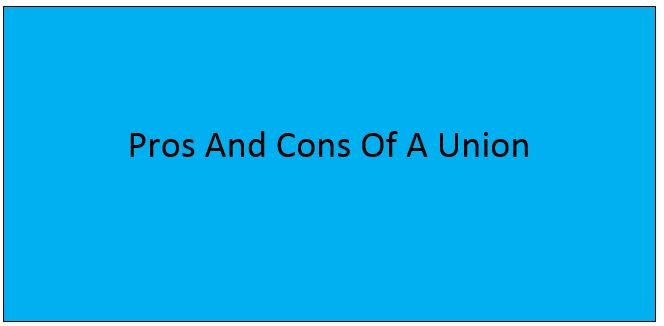Labor unions, organizations that represent workers in negotiations with employers, have a significant impact on the workplace. This guide explores the key advantages and disadvantages of unions to help you understand their implications.
Pros
1Higher Wages: Unions often negotiate higher wages for their members compared to non-unionized workers.
2Improved Benefits: Unionized workers typically receive better benefits, including healthcare, retirement plans, and paid leave.
3Job Security: Unions work to secure job protection and fair treatment, reducing the risk of arbitrary dismissal.
4Workplace Safety: Unions advocate for safer working conditions and enforce compliance with safety regulations.
5Collective Bargaining: Provides a collective voice for workers to negotiate terms and conditions of employment.
6Dispute Resolution: Unions help resolve workplace disputes through established grievance procedures.
7Legal Representation: Offers legal support and representation in cases of workplace disputes or injustices.
8Professional Training: Unions often provide training and education programs to enhance workers’ skills.
9Work-Life Balance: Unions negotiate for fair working hours and conditions, promoting a better work-life balance.
10Advocacy: Unions advocate for labor-friendly legislation and policies at the local, state, and national levels.
11Equality: Promotes equal treatment and fights against discrimination in the workplace.
12Pension Security: Unions often secure better pension plans for their members.
13Community Strength: Builds a sense of solidarity and community among workers.
14Voice in Management: Unions can give workers a voice in management decisions through labor-management committees.
15Economic Impact: Contribute to the overall economic stability by securing fair wages and benefits.
16Fair Treatment: Ensures fair treatment of workers through collective agreements and contracts.
17Consistency: Provides consistency in the application of workplace policies and procedures.
18Protection of Rights: Unions safeguard workers’ rights and ensure compliance with labor laws.
19Support during Strikes: Provides financial and logistical support to workers during strikes or work stoppages.
20Empowerment: Empowers workers to speak up and take action against unfair practices.
Cons
1Dues and Fees: Union members must pay dues and fees, which can be a financial burden.
2Strike Risks: Strikes can result in lost wages and potential job loss if not successful.
3Rigidity: Unions can create rigidity in work practices and make it difficult to implement changes.
4Conflict with Management: Can lead to adversarial relationships between management and workers.
5Limited Flexibility: Union contracts can limit flexibility in hiring, promotions, and work assignments.
6Potential for Corruption: Some unions have been plagued by corruption and mismanagement.
7Slow Decision-Making: Union negotiations and processes can be slow and bureaucratic.
8Seniority Over Merit: Emphasis on seniority can result in promotions and job security based on tenure rather than performance.
9Membership Pressure: Workers may feel pressured to join a union or participate in union activities.
10Costly for Employers: Higher wages and benefits can increase operational costs for employers.
11Impact on Competitiveness: Increased labor costs can impact a company’s competitiveness in the market.
12Potential for Strikes: Strikes can disrupt operations and cause financial loss for both workers and employers.
13Union Rules: Strict union rules and regulations can limit individual worker’s autonomy and flexibility.
14Exclusivity: Unions may exclude certain workers or job categories from membership or benefits.
15Contract Restrictions: Union contracts can impose restrictions on management’s ability to make necessary changes.
16Political Activity: Unions often engage in political activities, which may not align with all members’ views.
17Divisiveness: Union presence can create division between union and non-union workers.
18Mandatory Membership: In some cases, workers are required to join the union or pay dues regardless of their preference.
19Administrative Overhead: Maintaining a union and its activities involves administrative overhead and costs.
20Economic Impact of Strikes: Prolonged strikes can have a negative economic impact on both workers and the broader community.



